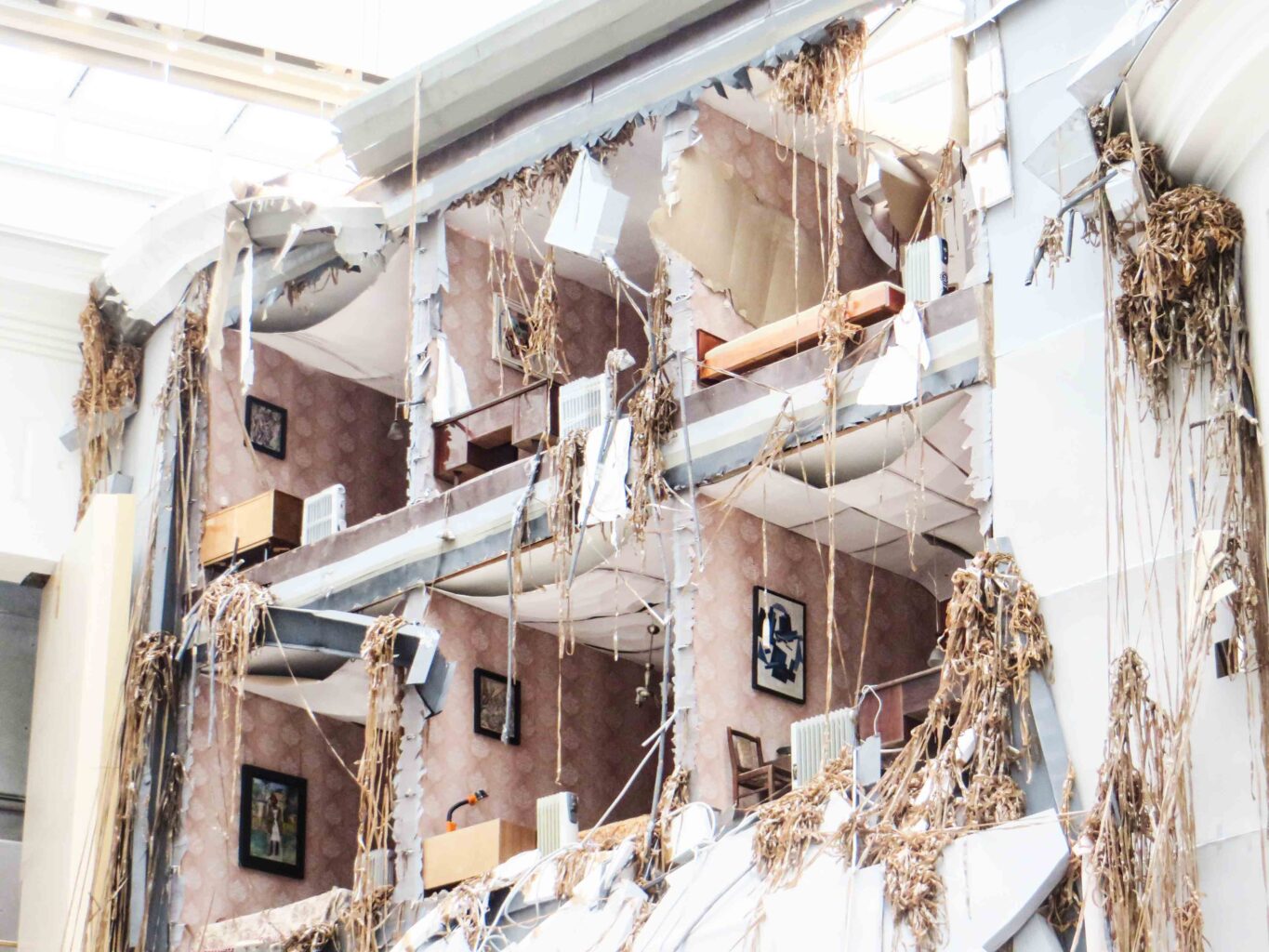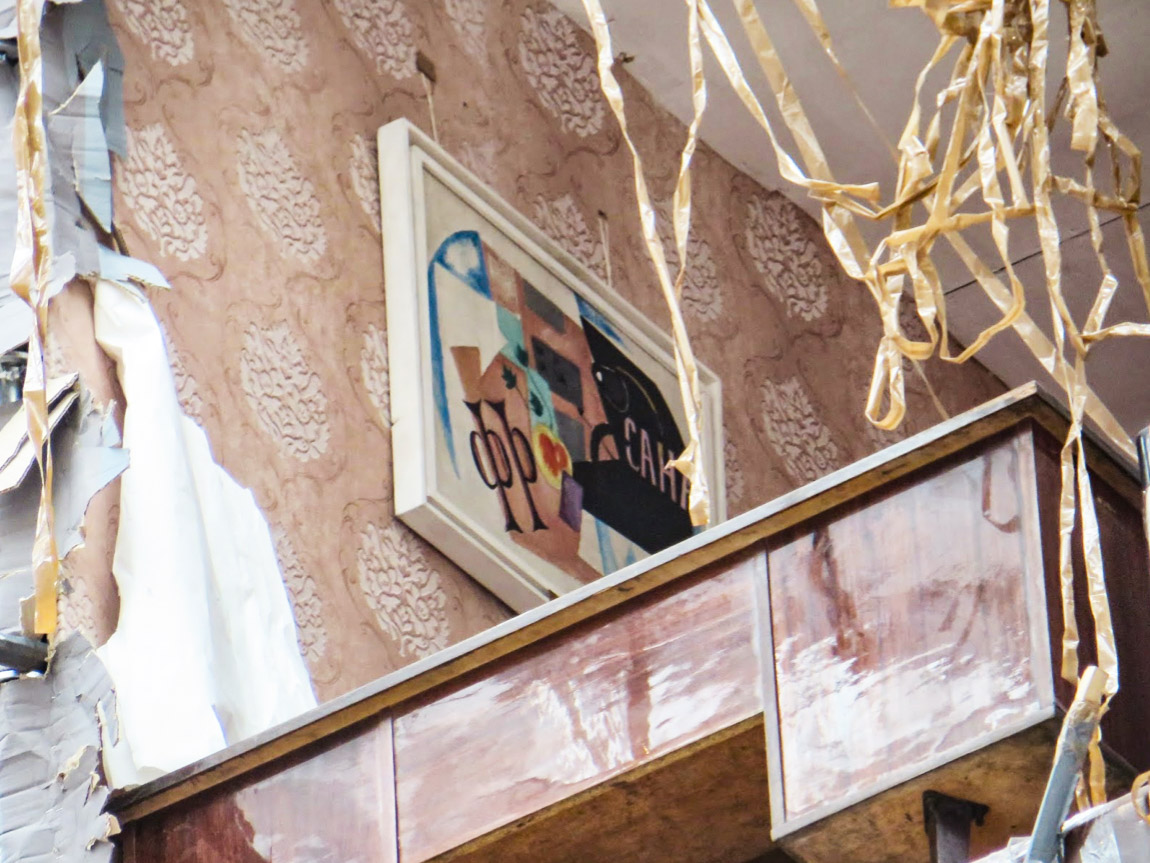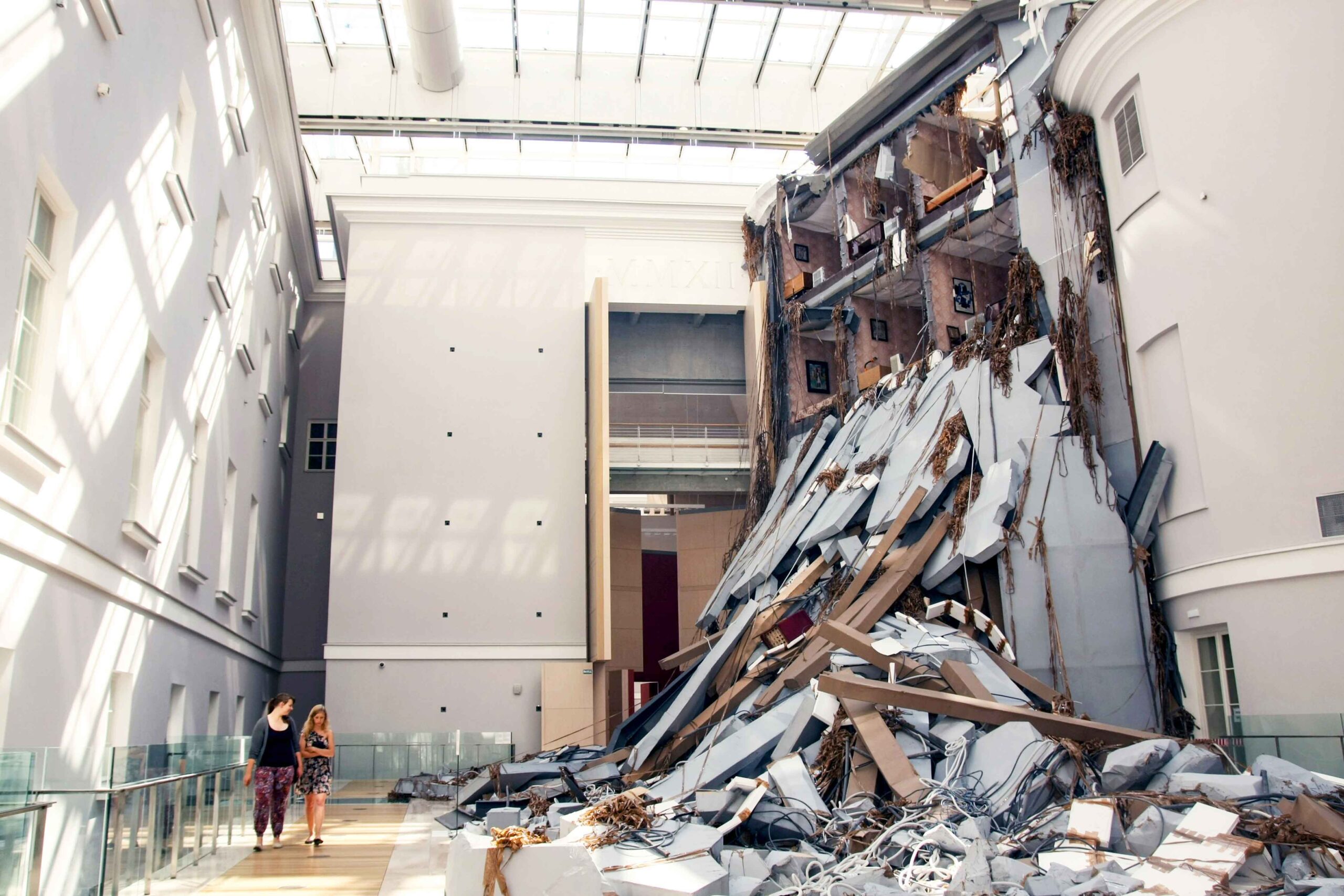Adrien Jutard, freelance artist and graphic designer of the ‹Goetheanum›, visited the exhibition ‹Manifesta 10› at the Ermitage in St. Petersburg in 2014 with a delegation of artists. On display were photographs of the protests on Maidan Square in Kyiv and an installation by Thomas Hirschhorn. Art anticipates reality and brings in the future. Eight years later, it is now apparent how much this is true. Wolfgang Held in conversation with Adrien Jutard.
How did the trip into the heart of Russian art come about?
In 2013, our group of artists visited the Biennale in Istanbul, and in 2014 we traveled to the exhibition ‹Manifesta›. This outstanding art event takes place every few years in different locations. At that moment, it was St. Petersburg’s turn.
What kind of impression did the city leave on you?
A picture has remained in my memory: in a park in the city, I saw a woman who had braided a crown from acacia leaves and wore it on her head – beautiful yellowish-reddish leaves around her forehead. What an interesting production, but one that did not match the serious, Slavic tone of the city. This is also how the famous Nevsky Prospect affects people. Western culture and Western economics stand in opposition to a completely different inner attitude to life. There was something very artificial about it, this juxtaposition of these two worlds.

And the Ermitage?
The museum – perhaps the most famous in this immeasurable country – renovated one of its wings to house the exhibition ‹Manifesta›. This is almost exactly the place where the Russian Revolution began. And again this discrepancy: on one hand, there is this wonderful new museum building, but at the same time behind the controller for the tickets is someone who has nothing else to do but control it. The Soviet Empire seems to have stopped there. We were now interested in the actual exhibition, and that was a strange coincidence: there were photographs by Boris Mikhailov about the protests from Maidan Square in November 2013 and February 2014. The Ukrainian photographer had captured on paper the protestors in their naturalness and everyday life. There was nothing heroic about it, and it was precisely this sobriety that impressed me. Mikhailov’s pictures are social documents. He doesn’t embellish the revolution, nor does he romanticize it.
Then there was the artwork ‹Abschlag› by the Swiss artist Thomas Hirschhorn. A massive installation, isn’t it?
The work of art has enormous dimensions: it stretches over three floors – over ten meters. We stood for a long time in front of the monument, and that is what it is – standing. He had staged a demolished row of houses with cardboard. Again, an aesthetic that doesn’t embellish anything. ‹Abschlag› here was supposed to mean that the destruction takes away the face of the house and at the same time makes visible hidden spaces and connections. «Forgotten parts of history are coming to light again,» he writes. He was also interested in the two dimensions of destruction: the vertical through the demolished house and the horizontal through the obstructed paths on the ground.

The drone flights over the ruins of Mariupol and Kharkiv have become inscribed in the world’s consciousness. Hirschhorn anticipated that?
Yes! For us in healthy Central Europe, destruction, in all its desolation and ugliness, is completely foreign. Seven years ago, Hirschhorn brought it closer to us, artistically exaggerated, or even beyond so. He was particularly concerned with exposed interiors. Just as we can’t let go of the pictures of the teddy bears in the rubble of houses in today’s war reporting, so is it with the wallpaper of the former interiors that are now being emptied by destruction. The soul is exposed. But Hirschhorn’s artistic grip takes it further: he hangs masterpieces of Russian paintings in the exposed interiors.
What does that signify?
Asking in this way always means abandoning art again. It reveals the highest and greatest of culture. The spiritual survives the catastrophe and seems to be immune to violence. Yes, it seems that an injury reveals the spiritual. The hit, which is here an ‹Abschlag›, a blow-off, becomes an apocalypse of the spirit. I think that’s what Hirschhorn brings into the picture. Then the façade falls, the façade breaks, and I see what the people who lived there loved.

It is said that a trillion Euros would be needed to rebuild the bombed-out cities. What can that mean when you say there is a surviving spirit? What does it mean for the reconstruction?
It means hope for the reconstruction. Hirschhorn’s work tells of the disintegration of Russia (after the fall of the Berlin Wall) and is perhaps a plea for a way of construction that understands the essence of this culture. The works hanging in the staged apartments date from the revolutionary period, early 20th century, illustrating a hopeful, utopian moment in Russian history. In order for the reconstruction of Ukraine to become more than ‹just› a reconstruction, it is therefore also a matter of finding such moments in Ukrainian history where the country was true to itself.
Cover Picture Thomas Hirschhorn, Installation ‹Abschlag›, 2014, ‹Manifesta 10›, General Staff Building, Ermitage Museum, St. Petersburg, 2014. Courtesy: the Artist and Manifesta Foundation. Photo: Wikimedia – Translation: Monika Werner













